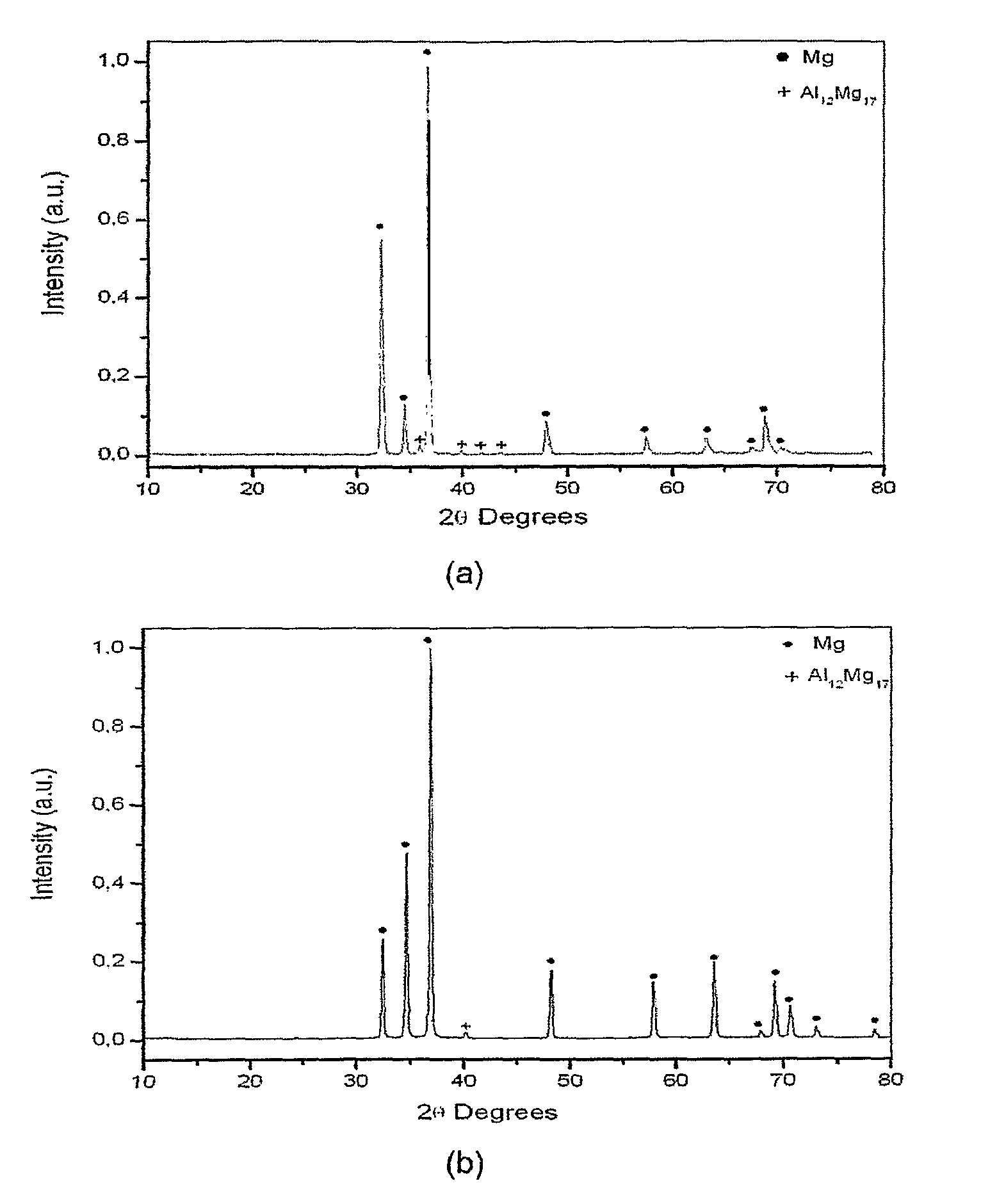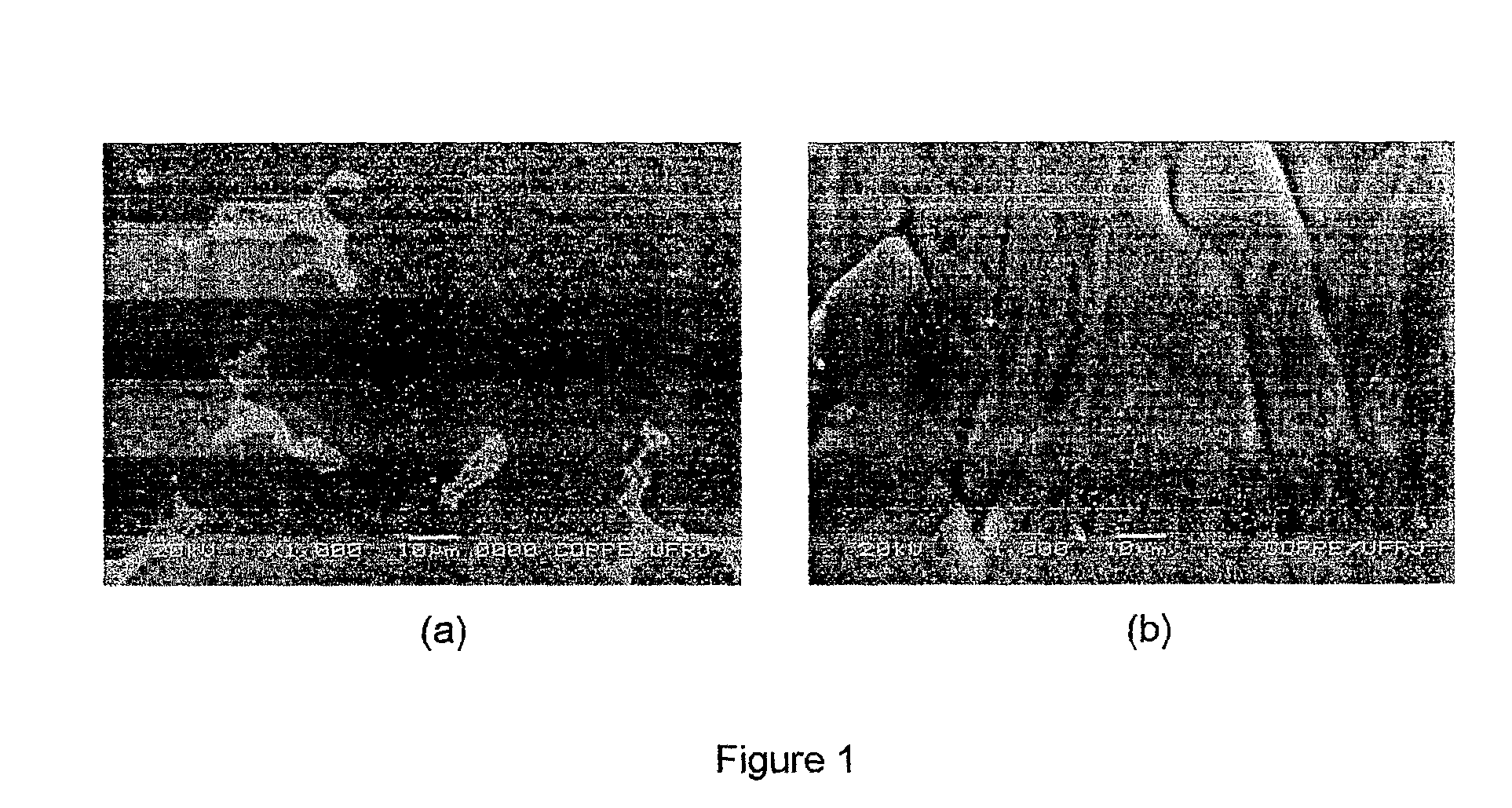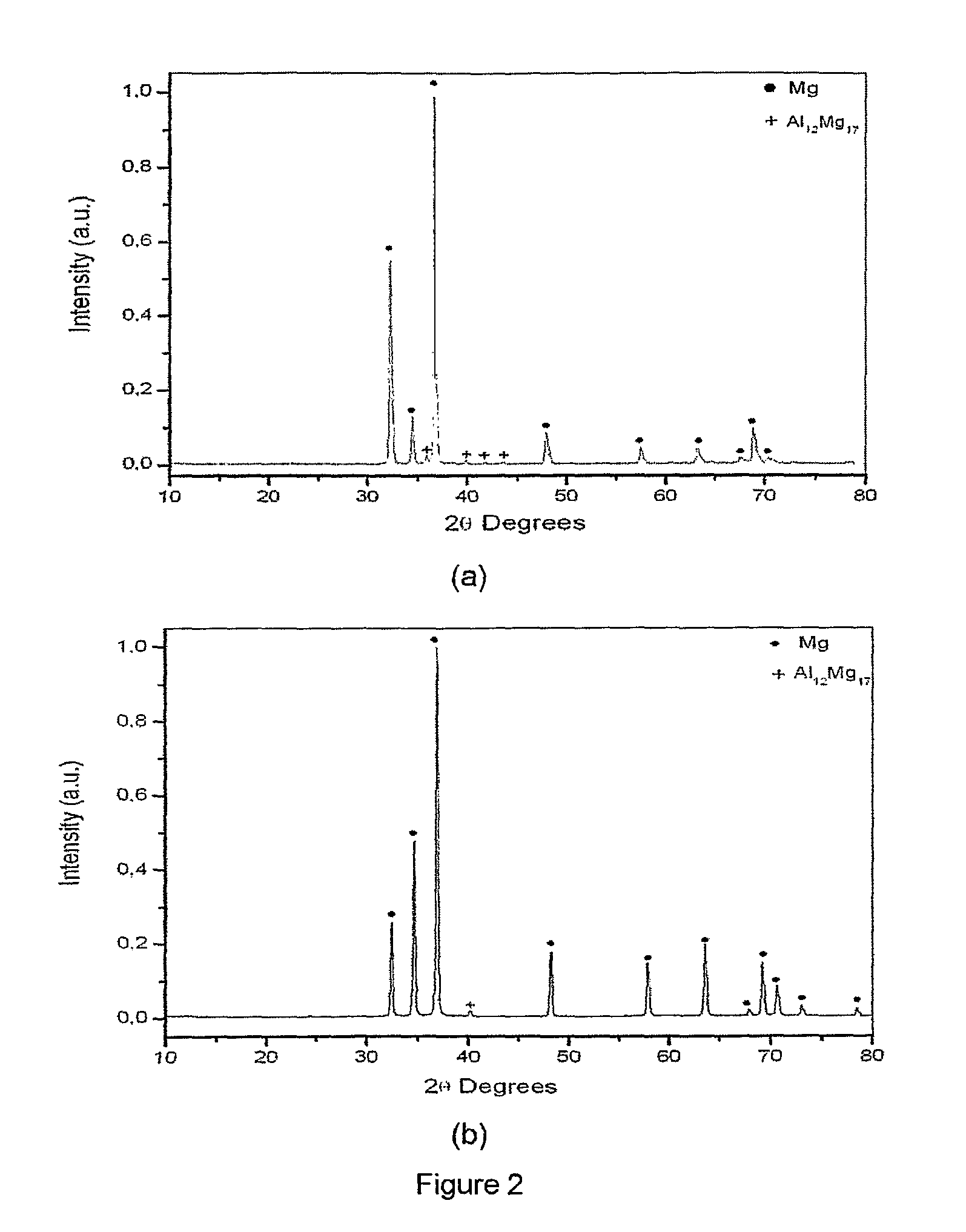Magnesium based-alloys for hydrogen storage
a technology of magnesium based alloys and hydrogen storage, which is applied in the direction of cell components, mechanical equipment, chemistry equipment and processes, etc., can solve the problems of poor ability to dissociate hydrogen molecules on the surfa
- Summary
- Abstract
- Description
- Claims
- Application Information
AI Technical Summary
Benefits of technology
Problems solved by technology
Method used
Image
Examples
example 1
[0031]This example demonstrates the influence of the fabrication procedures on the hydrogen properties in magnesium based-alloys.
[0032]The magnesium alloy with the chemical composition Mga—Alb-Tc-TRd, where a is in the range of 0.90 to 0.95; b is in the range of 0.05 to 0.10; c and d zero, was produced by induction melting and by rapid solidification. In the first case, samples with the shape of a disc and with thickness of about 1 mm were evaluated, and in the second case, the samples evaluated possessed a ribbon form with thickness of about 108 μm. The microstructures and the X ray diffractograms of the samples produced by conventional induction melting and by rapid solidification are shown in FIGS. 1 and 2, respectively.
[0033]In the microstructure of the magnesium alloy produced by conventional induction melting a magnesium matrix with lamellar eutectic precipitates is observed. The eutectic precipitates are composed by a solid solution of aluminum in magnesium and the Al12Mg17 i...
example 2
[0040]The magnesium based-alloy possessing the chemical composition Mga—Alb-Tc-TRd, where T is preferably Ni (3d); and TR is preferably Nd, where a is in the range of 0.60 to 0.85; b is in the range of 0.05 to 0.10; c is in the range of 0.05 to 0.10; and d is in the range of 0.05 to 0.20, was produced by conventional induction melting. Disk-shaped samples of the as-cast alloy with a thickness of about 1 mm were evaluated by pressure-composition isotherms and desorption kinetic curves in the temperature range between 300 and 400° C. (573 and 673 K) in a Sievert-type equipment. The microstructures before and after the hydrogenation procedure are shown in FIGS. 5(a) and 5(b), respectively.
[0041]The crystalline phases identified before the hydrogenation procedure were: Mg, Mg12Nd, AlNiNd, AlNi3 and Nd, FIG. 5(a). Upon hydrogenation, microstructural changes were observed and the crystalline phases identified were: MgH2, Nd2H5, Mg2NiH4, Al3Ni2 and residual metallic magnesium. It was obser...
example 3
[0046]The magnesium based-alloy with the chemical composition Mga—Alb-Tc-TRd, where T is preferably Ni (3d), TR is preferably Nd, where a is in the range of 0.40 to 0.90; b zero; c is in the range of 0.05 to 0.25; and d is in the range of 0.05 to 0.35; was produced by induction melting. Disk-shaped samples of the as-cast alloy by conventional induction melting with a thickness of about 1 mm were evaluated at the temperatures of 375, 350, 300, 250 e 230° C. (648, 623, 573, 523 e 503 K) in a Sievert-type equipment.
[0047]The desorbed hydrogen capacity as a function of desorption temperature and pressure is presented in Table 3. This alloy presented a hydrogen desorption capacity of at least 3.8 wt. %, at 230° C. (503 K), FIG. 8, and excellent kinetics. The hydrogen desorption kinetic curves in the first and in the maximum activation cycles are shown in FIG. 9. The Mg—Ni—Nd alloy achieved the highest hydrogen storage capacity since the first activation cycle. Submitting the alloy to lon...
PUM
| Property | Measurement | Unit |
|---|---|---|
| thickness | aaaaa | aaaaa |
| thickness | aaaaa | aaaaa |
| temperatures | aaaaa | aaaaa |
Abstract
Description
Claims
Application Information
 Login to View More
Login to View More - R&D
- Intellectual Property
- Life Sciences
- Materials
- Tech Scout
- Unparalleled Data Quality
- Higher Quality Content
- 60% Fewer Hallucinations
Browse by: Latest US Patents, China's latest patents, Technical Efficacy Thesaurus, Application Domain, Technology Topic, Popular Technical Reports.
© 2025 PatSnap. All rights reserved.Legal|Privacy policy|Modern Slavery Act Transparency Statement|Sitemap|About US| Contact US: help@patsnap.com



